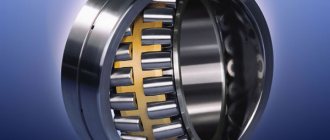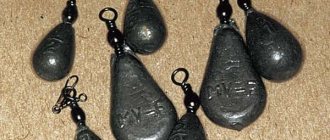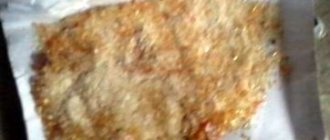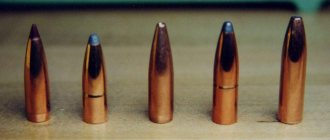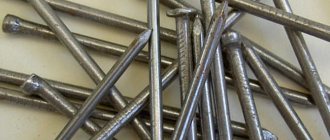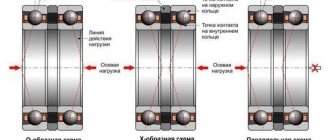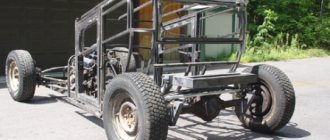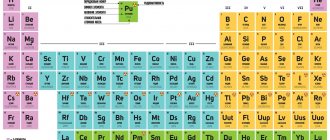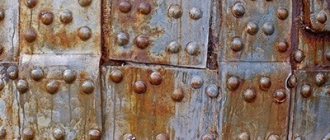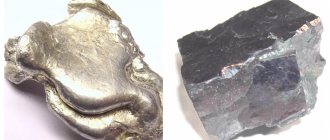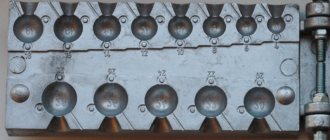Iron ore is difficult to mine, it is easier for enterprises to find secondary raw materials rather than use natural resources, so they think about where to get lead. You can help - this heavy non-ferrous metal is extracted at home. offers popular options. Choose a method that is effective in your opinion. We have established round-the-clock removal of lead scrap of various forms: seal, plate, cable protective sheath, production residues.
Lead deposits in nature
Lead is found in uranium and thorium ores. This heavy non-ferrous metal is used in shipbuilding, for the manufacture of lead weights, plates, and also for various repair work.
This metal has a number of properties:
- This is a fairly soft metal that can be easily scratched.
- Resistant to corrosion.
- Immunity to radioactive radiation.
- Often used for various hunting and fishing needs. The metal melts easily, so it can easily be used to make a sinker for fishing tackle or a bullet.
In addition to being used by fishermen and hunters, this metal is valued on the recyclables market because special protective sheets against radiation and various coatings in shipbuilding are made from it (due to its anti-corrosion properties). This means that it can be handed over quite profitably at collection points, especially with large batch volumes. Therefore, you need to know where to get lead at home, and whether any special tools or devices are needed to extract it.
Lead Babbitts
These are alloys of lead in order to give it better wear resistance and reduce the coefficient of friction. A number of metals can be used as alloying additives - copper, nickel, calcium and others. Lead-based babbits have proven themselves in the production of bearings for various purposes:
- carriages and electric locomotives;
- rotating parts of diesel engines;
- heavy industry;
- complex technology and automotive industry.
Since 1847, lead babbits have been an integral part of Russian industry. Among the disadvantages, quite rapid destruction from heavy loads is noted, so the durability of units using such alloys strongly depends on the quality of the metal of the bearing housing. The thicker and stronger it is, the more voluminous the babbitt layer can be made, and therefore increase the service life of the product.
main sources
This non-ferrous metal surrounds us all in everyday life. We'll list the main sources where you can get lead, so you can choose the one that suits you best.
From battery
Failed power supplies have a large supply of non-ferrous metal. You can find batteries at a landfill or in the garage of a familiar car owner. Generally, most people will be happy to get rid of this junk.
Lead in batteries is contained in the form of lead plates. To get them, you need to drain the electrolyte into a separate container, which involves completely disassembling the battery. The plates are in acid, so they must dry for 24 hours. In addition, the disassembly itself takes a lot of time, and special care must be taken because you will have to come into contact with liquids that are hazardous to health. If you are not sure of your actions, then the battery can be returned to the collection point in a non-disassembled form. Specialists will carry out the disassembly themselves and also send potentially hazardous waste for disposal.
Cable scrap
Another source where you can get lead is scrap cables. Typically, the metal is contained in a protective shell.
At collection points, cable scrap is highly valued if it meets the following requirements:
- The metal content in the shell is at least 99%.
- Normal radioactive background.
- No oxides.
- No contamination.
Soft lead can be removed quite easily with a regular knife, but keep in mind that bitumen is applied on top of it, which must first be removed. It melts well, so you can get rid of it by simply holding it over the fire for some time. All this effort totally pays off because the cable lead is much purer than the metal you extract from the battery.
Fishing sinker
You can get them from your friends who are keen on fishing. There is another way - buy them in a special fishing store and then melt them down, but this is an extremely dubious method that is unlikely to bring you much profit.
Car wheel
The design of a car wheel has one lead part - a balancing weight. It weighs only 60 g, so this method of earning money is more suitable for specialized auto repair shops, rather than ordinary car owners. Lead is also found in shrapnel and bearings.
Other metal sources
There are places where lead is found in fairly large quantities, but access to them can be difficult for the average person. The first source is meters. This method is suitable for those who have friends who work in energy services and water utilities. They often have to put or remove seals on meters. They are made of lead, so they can be sold profitably if there are enough of them.
Another source is electrolysis baths, where this metal is found in large quantities. They become unusable over time, so this is a good solution for a company to get rid of scrap metal while making a profit.
Plumbates
Calcium orthoplumbate is a faint orange crystalline substance. Throughout the 20th century it was used in chemistry and medicine as a source for easily producing pure oxygen, which is released when heated. This was also facilitated by the ease of synthesis of the substance itself - it is obtained by calcining lead oxide and calcium carbonate. Further success was hampered only by the toxicity of the process.
The following group of plumbates is used in the chemical production of complex lead compounds:
- sodium metaplumbate;
- ammonium hexachloroplumbate;
- hexachloroval acid;
- potassium triodoplumbate.
All of them easily decompose, dissolve in water and react with other compounds. This makes them an indispensable raw material and catalyst for many processes, as well as a basic component in the production of some complex substances.
Why is it necessary to recycle non-ferrous metal?
Many people have an incorrect perception of the activities of non-ferrous metals collection points. In their view, these are semi-legal organizations that profit from the population. This opinion is largely explained by the work of points that operate unofficially, buying up even what is prohibited from being accepted under the current legislation of the Russian Federation.
is a specialized reception point that operates in strict accordance with current regulations. This is why it is profitable for us to sell lead and other non-ferrous metals:
- You make a profit - about 70-120 rubles per kg (depending on the type of scrap metal).
- For enterprises, this is a good opportunity to get rid of potentially hazardous waste, unloading their industrial territory.
- Environmental protection. This non-ferrous metal is toxic, so it must not be disposed of with other household waste.
- Processing raw materials for recycling involves lower costs than extracting metal from nature. At the same time, this is a more environmentally friendly process.
We buy non-ferrous metals at our collection points in Moscow and the Moscow region. We work officially, so we provide all the necessary documents for government services (on request).
Industrial production
From ore containing lead (most often it is galena, a sulfide class mineral), at the first stage a concentrate of 50-70% is obtained. To do this, the raw materials are crushed and mixed with oil and water. The sulfide compounds are coated in oil and retained on the surface of the solution, while the by-product rock precipitates. This method is called flotation.
Next, from the resulting concentrate it is necessary to obtain werkbley (the name of rough lead in metallurgy, the content of the target metal is approximately 90%). First, thermal agglomeration of the concentrate is carried out, and the mass is significantly enriched with oxygen. After this, lead is reduced from the oxide in the waterjacket shaft.
At the last stage, pure lead is obtained. To remove a specific metal and other impurities from an alloy, a separate procedure is required:
- Taking advantage of the difference in melting temperature, metals that are more refractory than lead (for example, copper) are separated. The process is called zeigerization.
- Arsenic and antimony are removed by alkali refining.
- Zinc foam allows you to highlight some precious metals.
- Reactions of calcium compounds help remove bismuth from the composition.
The final set of necessary processes depends on the degree of contamination of the rock. The result is lead with an impurity content of about 0.1% or less.
How to extract?
Having obtained a battery, beginners often ask the question of what to do next. Experts recommend performing a complete disassembly. Only in this case will it be possible to remove the lead plates. Since they are in acid, they must dry out before melting. Judging by the reviews, disassembly will take at least six hours. The plates dry within 24 hours. Melting will take one hour. In general, you will have to work on one battery for at least a day and a half. As a result, after melting the plates, up to two kilograms of lead can be extracted. Whether it is worth spending time on this, everyone decides for themselves.
From car wheels
Another option where to get lead is a car service. Since the car wheel is equipped with special balancing weights, if necessary, they can be dismantled and used for other purposes.
According to experts, one such weight weighs 50-60 g. Judging by numerous reviews, 1 kg will cost no more than 50 rubles. For beginners and those who have no idea where to get lead, experts recommend using car weights.
But today lead is not used in its pure form as a material for their manufacture. Often this is zinc with admixtures of babbitt - a low-melting anti-friction alloy. The composition may include antimony and tin. In addition to weights for wheels, lead is also extracted from sliding bearings, and less often from sealing gaskets.
Get rid of oxide
If there is already an oxide film on the surface, it can be removed with concentrated acid.
Remember that for chemical experiments it is better to use chemical glassware. An ordinary glass jar may not be strong enough, and using metal or plastic objects is not at all advisable. Don’t forget to also take precautions - you need to wear gloves when working with caustic acids. A protective mask is also advisable. Dip the object into the acid and wait until the oxide film disappears. Carefully pour off the acid. Let the product dry, then lubricate it with oil, graphite grease or varnish. When working with lead, remember that this material is toxic. Lead has been known since ancient times. This metal is indispensable in many industries due to its physical and chemical properties. To use lead, you need to know its melting point, which will allow you to make the necessary materials and parts from it. It is easily forged, very ductile, and is also inert to acids at normal temperatures.
Cosmetics, plumbing, typographical letters...
In the British Museum there is a lead figurine of a woman from Egypt, dating back to the third millennium BC. This is the oldest (officially) lead object. The Egyptians (more or less wealthy) considered it indecent to go out without applying makeup to their eyes. Therefore, the cosmetics market was well developed. Black lead sulfide or white lead carbonate was used for eyeliner. The fat base was goose fat. The raven shine of ancient Egyptian hair was often achieved by vulgar coloring with lead oxide paste.
Great Roman Empire
The eternal city left behind eternal roads (some are still quite usable), eternal Roman law (which, despite its ancient age, is still studied by lawyers), and aqueducts. They brought water from the mountains to the residents. Lead pipes were used in the extensive water supply system.
The Romans attached great importance to water supply. Sextus Julius Frontinus, who lived in the first century AD, wrote an entire book “On Aqueducts.”
Lead pipes of an ancient Roman water supply with inscriptions
Here are a couple of quotes from it:
“The pipe is made by rolling a lead plate five fingers wide into a circle.
... All curators ... served as consuls before their appointment, which indicates the high status of the water curator.”
Time forward!
With the development of printing, more and more lead was needed. It was used for the production of typographical letters. The invention of batteries and the development of the automobile industry spurred metal mining. And everyday, but necessary little things, such as pigments and lead compounds for paints, are still in demand.
Papal bull of 1637 with lead seal
That's what they called...
The origin of the name of the metal is still unclear. In the old days, tin and lead were often confused, although enlightened people (like Pliny) distinguished them: Plumbum nigrum (lead), Plumbum album (tin). For the English, a plumber is a plumber.
Informative: in Venice there was a Piombi prison; it was also called Lead. Casanova, the lover of all times and peoples, sat in it and managed to escape from it.
In many Slavic languages our hero is called tin. Although in Old Russian it is (svinets), Slovenian (svinec), in Belarusian (svinets). But in the Baltic languages the names are similar - svinas (Lithuanian), svin (Latvian).
There is a version: the word has the same root as the word “pig”, pig, pig - an ingot of dirty metal. We recommend: COPPER - the foundation of civilization
